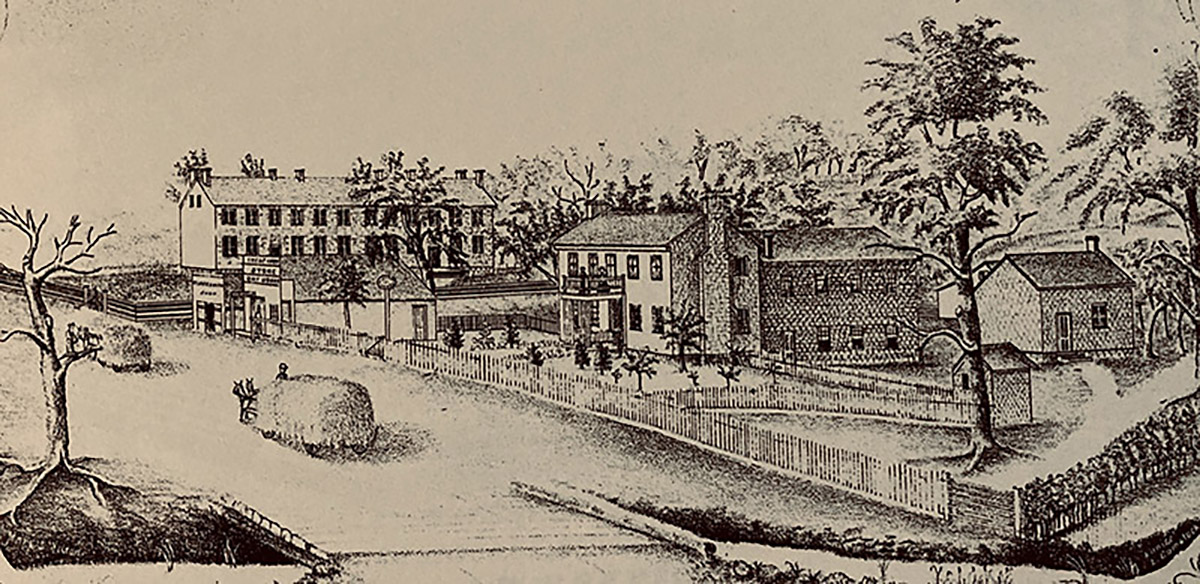Telling the history of the Shawnee Indian Mission Historic Site
These webpages, interpreting and sharing the history of the Shawnee Indian Mission (SIM), endeavor to tell the wide and complex variety of stories of that place and the people who lived them. They are not bound by a single group or experience or perspective and have as their goal to tell those stories fully, including the less attractive truths. A useful History must be honest to the Past in its effort to educate and inspire.
To that end we welcome comments, and suggestions of additions, changes, and deletions for the webpages as long as they can be supported from the historical record.
New stories and materials from descendants of participants in the Historic Sites’ history are particularly appreciated.
Please contact us at SIMLibrary@fairwaykansas.org
Thank you and enjoy learning the Shawnee Indian Mission Historic Site rich history.
Timeline
The region before the Treaty of 1825 // The Shawnee Lands, 1826-1838 // The Indian Manual Labor School, 1839-1841 The Indian Manual Labor School, 1842-1847 // The Indian Manual Labor School, 1848-1854 // The Indian Manual Labor School, 1855-1865 // The Private Years, 1866-1927 // A State Historic Site, 1928-
Mission and School
Buildings and grounds
Pictures
Maps
Mission Moments
Content to come.

Where do the names come from? Compiled from the official reports filed quarterly with the War Department (the federal agency at the time responsible for Indian Affairs), annually with the Methodist Mission Board (the primary founder of the school), and other miscellaneous sources that provide names, the lists reflect multiple entries for the same names. Most of these entries are for the same student recorded for different years. However, some names appear to be used by different students from different tribes or by different students during varying years (i.e. Sally Bluejacket, age 10 in 1849, but another Sally Bluejacket age 15 in 1851.)
Yes, some names were assigned to students when they arrived at the school, while many were names given by their family at birth (as examples, Ben Chouteau, Baptiste Grenville, Jane Sarahass, Elisa Parks.)
Why were anglicized names assigned to students? Students were expected to learn and speak English. There were students from some 22 different tribes as well as teachers who may or may not have spoken any of those languages. Requiring English, in kind of an immersion teaching method, was necessary in the classroom and other similar situations. Again, speaking English, and by extension an anglicized name, was a necessary step for being able to function in the broader community. It seems highly unlikely that there was an enforceable universal ban on Native speaking or use of native names (at least outside the classroom) especially considering that parents and other Native Americans were constantly visiting the school. Moreover, the students were only at the school for 8 months out of the year.
Student rolls are presented in several tables:
Alphabetical for Boys and Girls
Chronologically by year and class: 1841, 1842, 1843, 1847, 1849, 1851, 1852, 1853, 1854-55
By tribe: Delaware, Kansas, Ottawa, Peoria, Pottawatomie, Shawnee, Wyandotte, Other tribes
